Survey Calendar
overview of surveys & timings
Broad information about the surveys we undertake is provided below.
Ecological surveys need to take place when species are active, or growing, in order to ensure accurate results. View our calendar to see when surveys for the most commonly encountered species generally take place.
Please get in touch for more detailed ecological advice specific to your project. We offer an initial consultation free of charge.
habitat survey
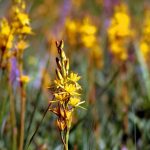
April - October
(Sub-optimal: November - March)
These surveys enable standardised assessment of vegetation and wildlife on site and are important for biodiversity net gain assessment. They can be 'extended' to identify likely habitat of protected and notable species. Surveys inform production of a Preliminary Ecological Appraisal (PEA) and can be undertaken year round, but in the optimal period more detailed species lists can be compiled, which helps classify habitats.
botanical survey
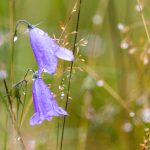
April - October
National Vegetation Classification is typically required where initial habitat survey has revealed potential for botanical communities or habitats of conservation interest, such as Groundwater Dependent Terrestrial Ecosystems (GWDTE). These detailed surveys are used to assist in micro-siting projects, or the creation of habitats. For some habitats, an alternative period may be more appropriate, and advice should be sought for your specific project.
breeding birds

April - July
(Sub-optimal: March and August)
In the UK, all wild birds, their nests and eggs are protected by law, and most types of project site will require a bird survey. The majority of UK birds start nesting in March or April, depending on local temperature conditions. Breeding bird surveys are typically scheduled between April and mid-July as the optimum period. Survey methods are adapted to suit the particular project, or the specific species under observation (e.g. waders).
wintering birds
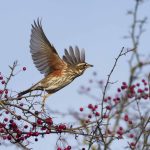
November - February
(Sub-optimal: October and March)
Some birds may not be encountered in the UK summer nesting period, but are found on UK sites in winter. They may have travelled from northern breeding grounds, or be on passage further south. Some sites may be particularly important for birds in winter. Wintering bird surveys are designed to assess whether any birds of conservation concern are present on a site during the winter period. The number of survey visits and techniques required will depend on objectives and the project itself.
migratory birds
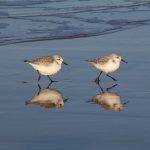
Sept-Nov & Mar-May
(Sub-optimal: early March & late May; early July, August and late November)
Birds migrate typically in spring and autumn, however these periods are variable and dependent on the species and local conditions. Flight activity surveys may be required if a development has the potential to lead to collision risks for autumn or spring migratory species.
great crested newt
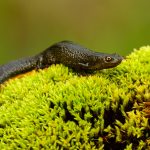
April - May
(Sub-optimal: March and June)
Great crested newts (GCN) are a legally protected species and any site within 500m of a pond, or a known location for GCN may require a survey. To scope potential, a Habitat Suitability Index survey can be done at any time. An HSI cannot determine presence or absence or population size, so population estimate surveys are required (4-6 surveys depending on whether GCN are found), with at least half at the optimum time of mid-April to mid-May. eDNA surveys can take place from mid-April to end June and are used to establish presence. They need to be followed up with population estimates, so timing is crucial.
reptiles
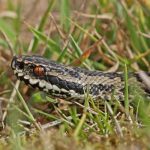
April - May; September
All UK reptiles are protected, the most common species, which are those most likely to be encountered in northern England and southern Scotland are adder, common lizard and slow worm. Grass snake have also been recorded in south west Scotland. Surveys may be required if your site is within favoured reptile habitats (such as, heathland, open woodland, semi-natural grassland and moorland). Multiple visits to establish populations are required and include advance preparation such as laying out artificial refugia on site.
invertebrates

April - September
(Sub-optimal: March & October)
Invertebrates perform important ecosystem functions such as decomposition and pollination. Some are legally protected, others are priority or notable species of conservation interest. Habitats likely to require invertebrate survey include brownfield sites, flower-rich grasslands, ponds and aquatic environments and woodland.
badger
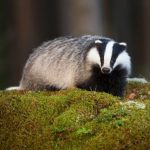
Jan - Dec
Badgers are a widespread, mobile species and most significant development projects are likely to have to consider potential impacts on badgers and their setts. Surveys can be undertaken year-round, however winter and early spring are optimal, as, in summer months dense vegetation can inhibit surveys.
otter

March - May
Otter surveys can be undertaken year round, however in spring vegetation has not become established and facilitates assessment of survey sites. Field surveys for signs and resting sites are undertaken during daylight hours. If your site is in close proximity to a watercourse or wetland area, an otter survey is likely to be required.
red squirrel

Jan - Dec
Red squirrel surveys can be undertaken year round, although spring and autumn are optimal. Whilst red squirrel numbers have diminished in northern England and southern Scotland, if your project is within, or in close proximity to woodland, and in particular if it requires tree felling then the potential for impacts on red squirrels are likely to need to be considered. A variety of survey methods can be used to assess red squirrel populations. Techniques are likely to be dependent on woodland type, age and whether grey squirrels are present.
pine marten
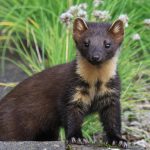
April - July
Pine marten can be found in the Scottish Borders and the Cheviots, as well as other parts of northern England, and their homelands in the north west of Scotland. A site's potential to support populations of pine marten can be established during surveys for a Preliminary Ecological Appraisal. Specific pine marten surveys may be required if your project is proposed within woodland or forested areas in locations where pine marten are present.
water vole

April - September
The survey period for water voles is shorter in colder and more upland locations (mid-May to mid-September). The minimum number of required surveys is usually two and water vole surveys are likely to be required if your development project is located within or close to significant areas of wetland (e.g. ponds, watercourses, marshland).
bats: assessment

Jan - Dec
Preliminary Roost Assessments (PRAs) for bats in relation to buildings can be undertaken year round (see below for bats and tree roosts). In winter, the likelihood of finding roosts is slightly reduced, however evidence of bat presence may be found in sheltered internal spaces. If roosts are found, or if there is potential for bats to use the site to roost, then follow up surveys in summer are likely to be required. The legal protection for bats is strict and a material consideration in planning, therefore early consideration of whether your development project may impact bats is vital to avoid delays.
bats: activity survey
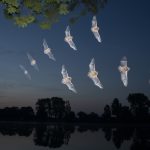
May - August
Bat activity surveys are used to determine flight paths, commuting and foraging behaviour in suitable habitat, with multiple visits being required to establish behavioural patterns. As with all bat surveys, seasonal constraints mean that advance consideration of whether your development project may impact on bats is vital in order to avoid delays.
bats: summer roost
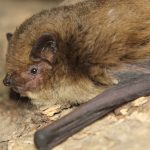
May - August
Following an initial assessment (Preliminary Roost Assessment) for bats, the suitability of a site to support roosting bats will determine the minimum number of summer roost surveys (usually one for low suitability, two for moderate suitability and three for high suitability). Through multiple surveys, the presence of roosts can be characterised. Dusk emergence surveys must usually be undertaken May to August, therefore advance consideration of whether your development may impact on bats is highly recommended to avoid delays.
bats: hibernation

Jan - Feb
Bats hibernate from November to March, however January and February are the optimal time to undertake hibernation roost assessments. Structures such as ice houses and cellars can provide steady, cool temperatures that bats require to maintain torpor throughout their hibernation. Some species hibernate in trees and species such as pipistrelle may hibernate in suitable small crevices.
bats: tree roosts
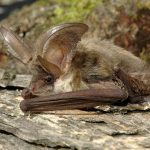
Jan - Dec
Aerial surveys of tree roosts can be carried out year round. However, initial assessments are best undertaken in winter, when trees are not in leaf, to identify potential roost features (PRFs). Emergence surveys can also be undertaken at dusk from May to August. Cheviot Ecology also offer's tree-climbing surveys.
